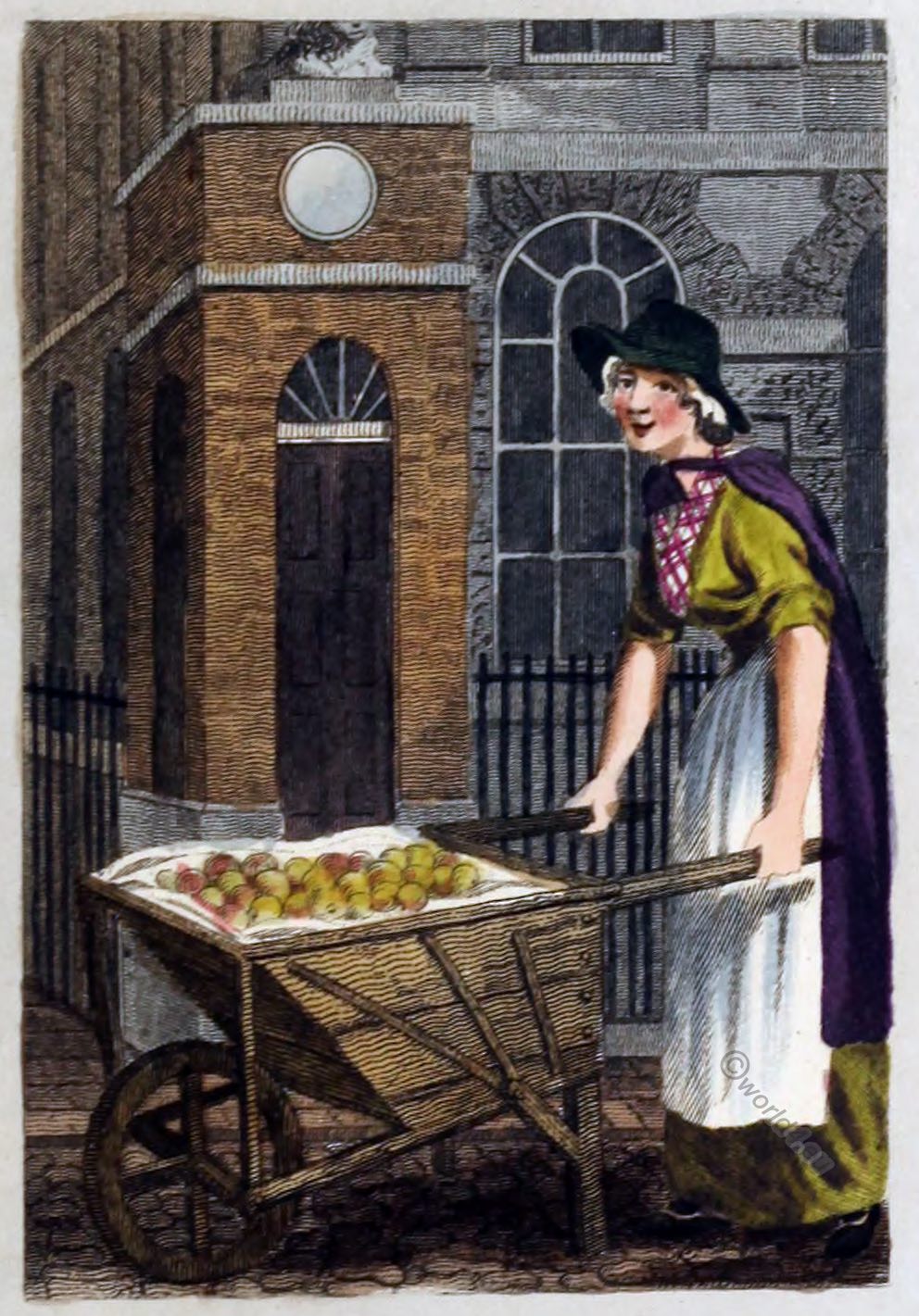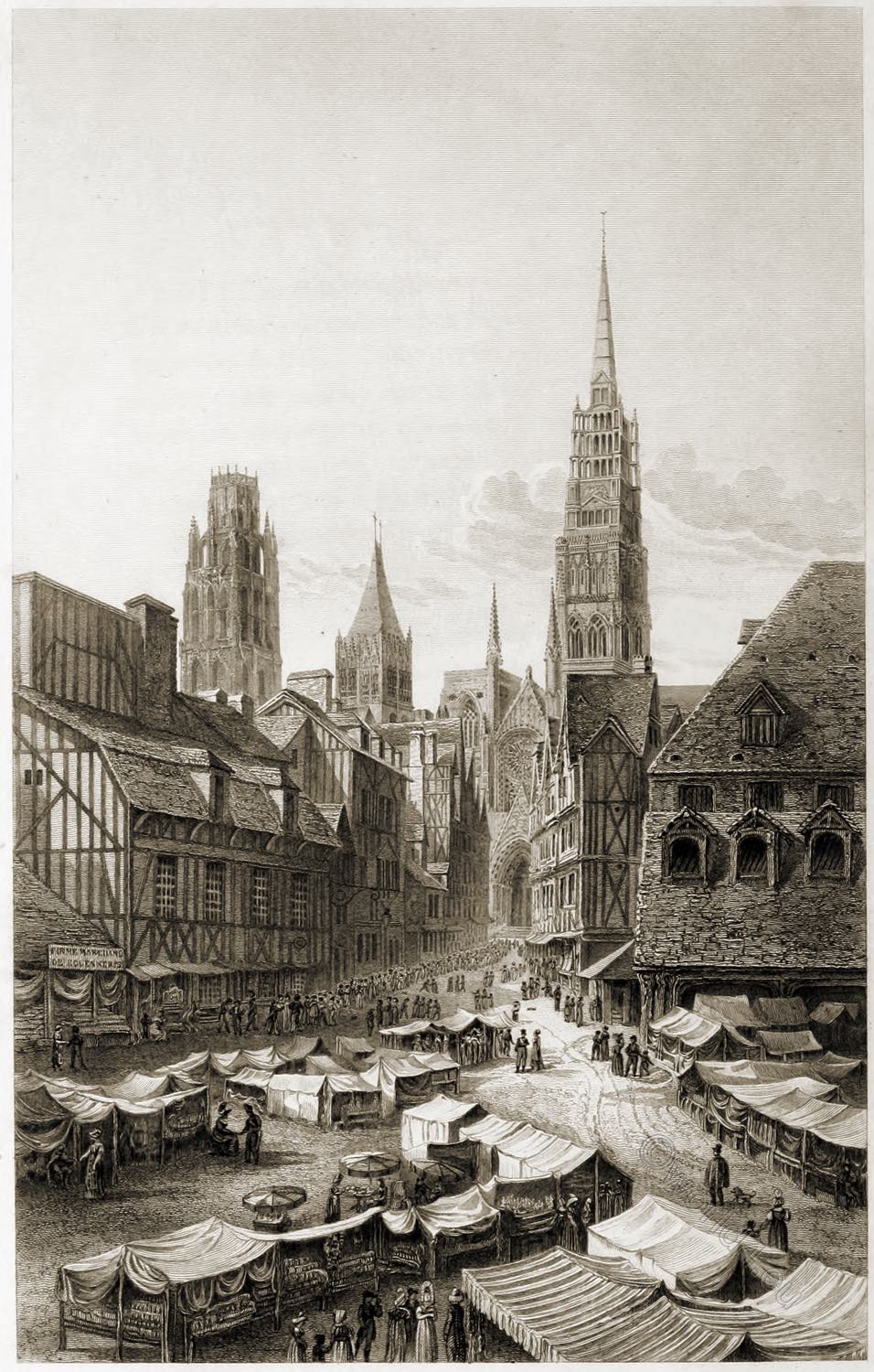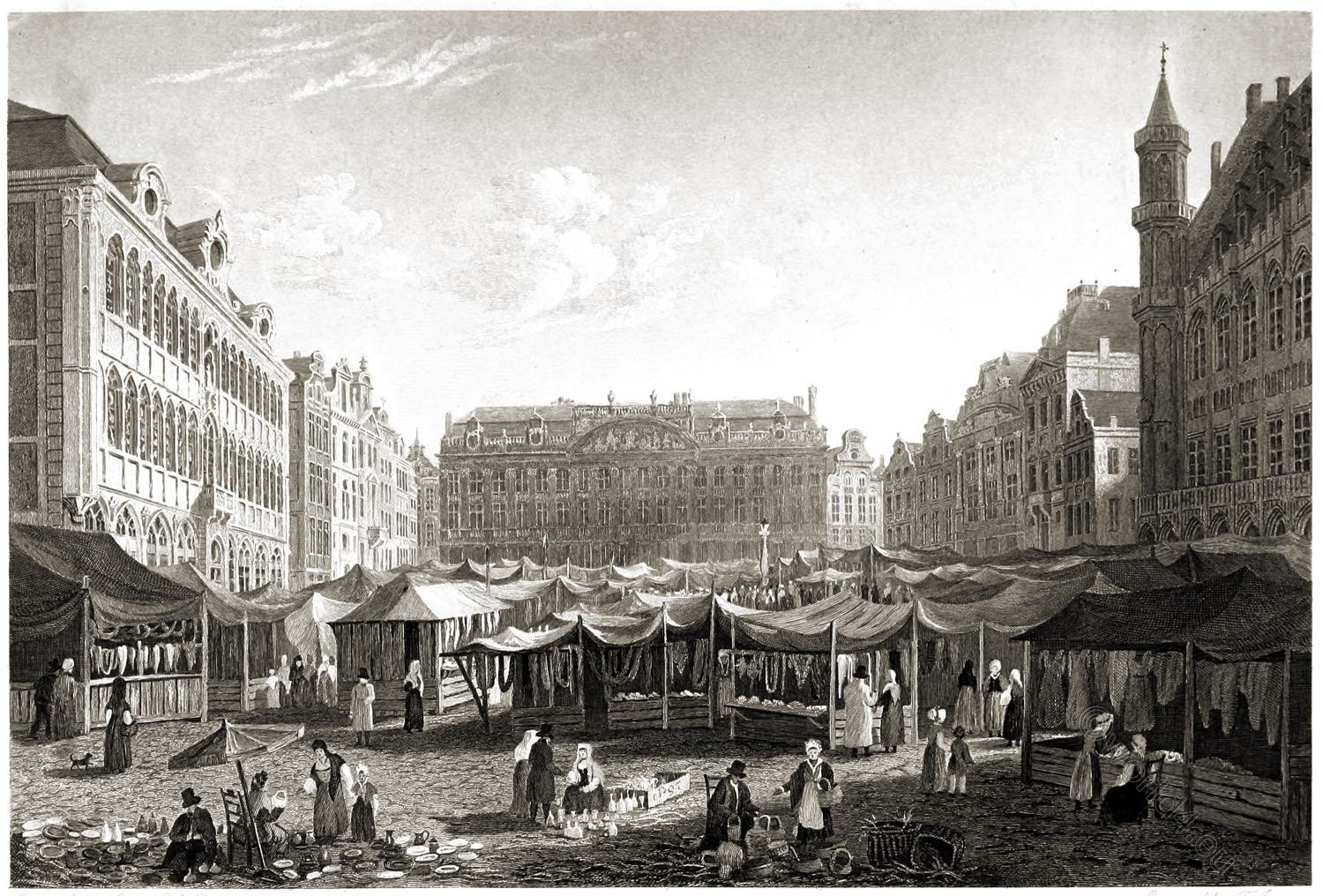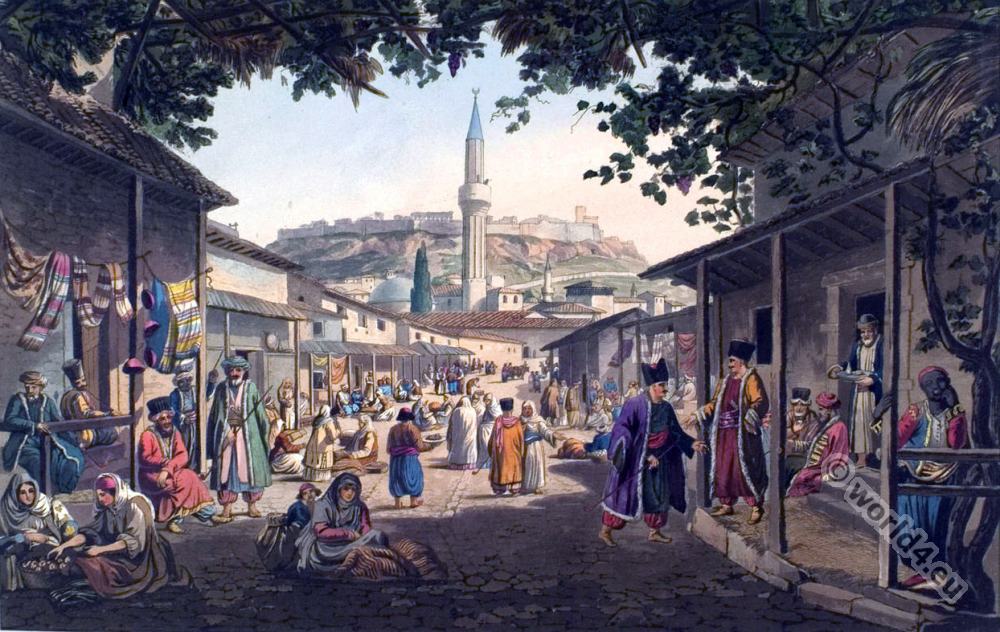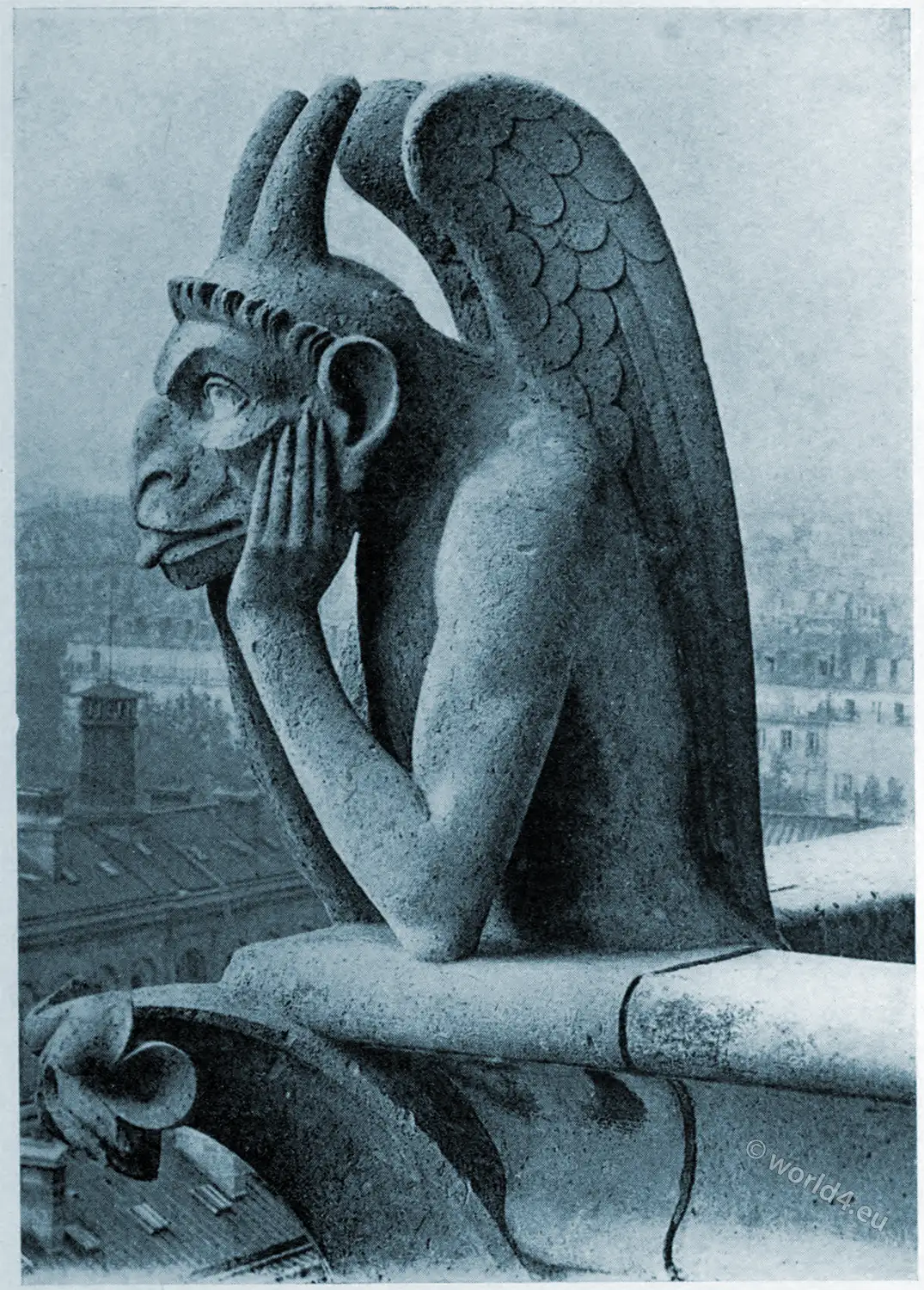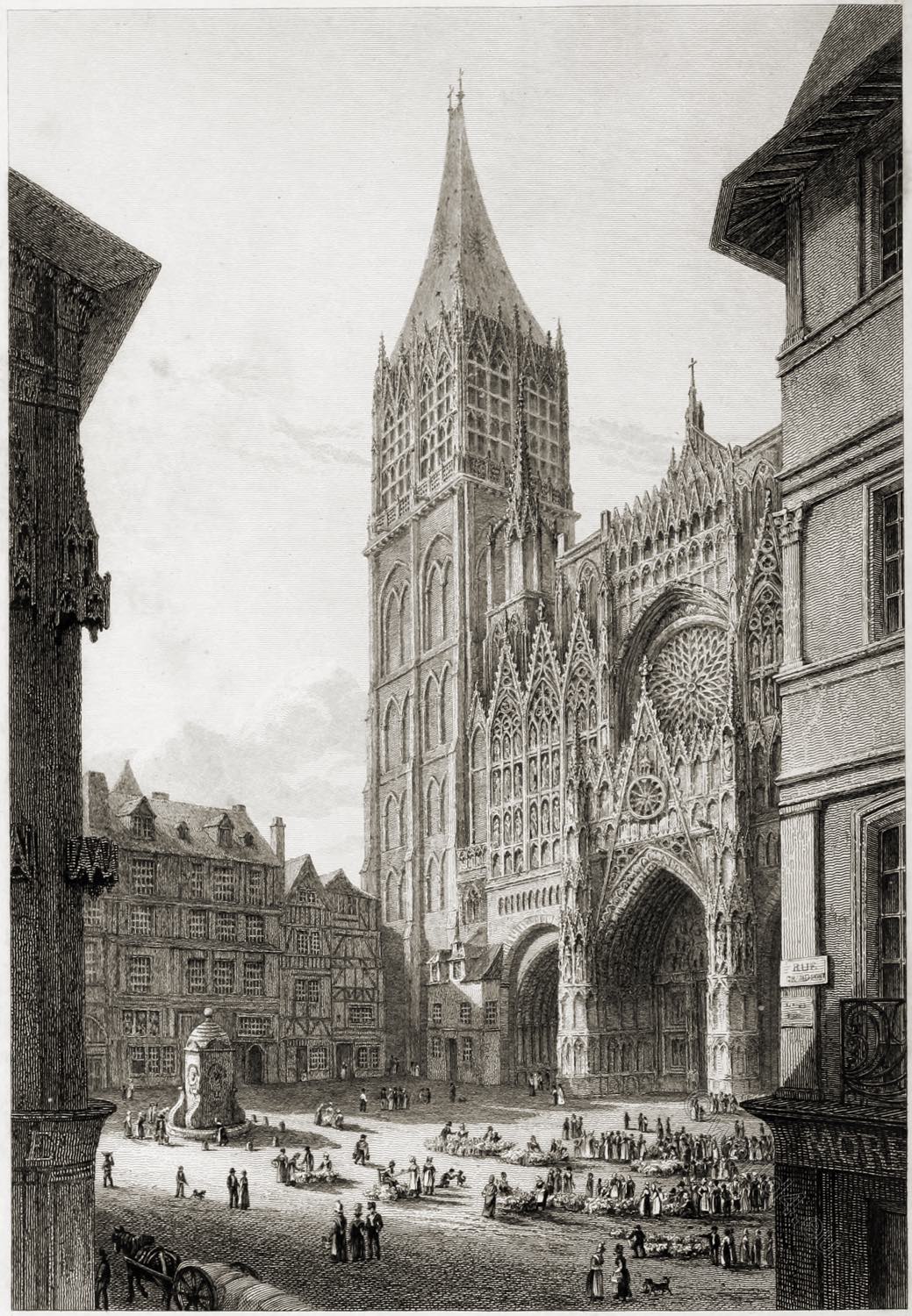Place Vendôme is one of the five “royal squares” of Paris and is located in the middle of the city between the Paris Opera and the Tuileries Gardens in the 1st arrondissement.

PARIS. PLACE VENDÔME
by Robert Batty
THIS place is named after César de Vendôme, son of Henry IV., and Gabrielle d’Estrées. The minister, Louvois (Marquis de Louvois), in the reign of Louis XIV., first projected a square on this spot; but after his death, the plans which had been adopted were rejected, and those of Mansard, the celebrated architect, adopted in their stead. The buildings which form its inclosure were erected about the year 1699, and form nearly a perfect square with the angles cut off. It is traversed by the Rue Royale from the Rue de Rivoli to the Boulevards.
A magnificent equestrian statue in bronze, of Louis XIV., was erected on a white marble pedestal, in the centre of the square. This handsome monument was unfortunately destroyed in the year 1792 (French Revolution). Its loss has, however, been amply compensated by the construction of the bronze column, raised on its site, to commemorate the victory of Austerlitz.
This column is built on the model of that of Trajan in Rome. Its height is 233 (French) feet, and its diameter 22. Like the Trajan column, its whole exterior is ornamented with bas-reliefs representing different events in the campaign. Though it is perhaps inferior in beauty to the marble column of Trajan, it is incontestably the finest triumphal monument of modern art that can be seen in any city of Europe.
Source: French scenery: from drawings made in 1819 by Robert Batty (1788 or 1789-1848). London: Published by Rodwell & Martin, New Bond Street, 1822.
Related
Discover more from World4 Costume Culture History
Subscribe to get the latest posts sent to your email.

